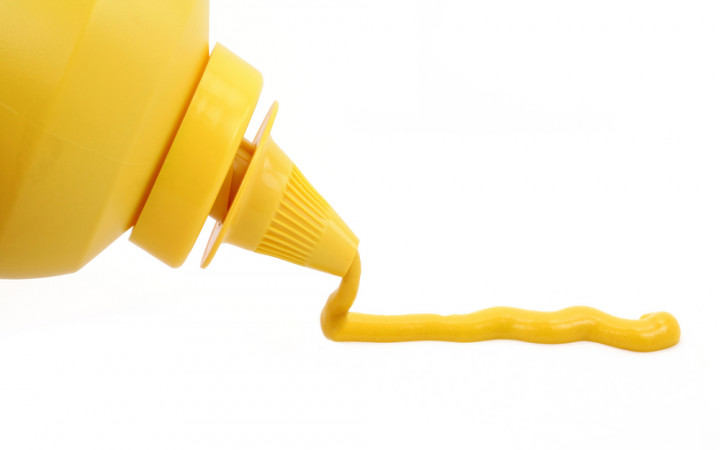Today’s Wonder of the Day was inspired by Maddox. Maddox Wonders, “What is mustard made of” Thanks for WONDERing with us, Maddox!
If you're planning a picnic or a cookout, you may have already gotten the burgers, hot dogs, buns, chips, and drinks. But don't forget the mustard! A hot dog just isn't the same without that squiggly little line of mustard down the middle!
Before it becomes the bright yellow condiment you're familiar with, mustard starts out as tiny seeds that are white, brown, or black. Those tiny mustard seeds eventually grow into mustard plants that can be quite tall!
Some mustard plants are grown for their leaves, which are eaten as a vegetable in some parts of the world. Most mustard plants, however, are harvested for their tiny seeds.
Mustard plants are grown all over the world. However, 85 percent of the world's mustard seeds are grown in Canada, Montana, and North Dakota.
When thousands of mustard seeds are crushed, they form mustard powder. Mustard powder can be used alone as a spice or added to other ingredients to make mustard.
For example, mustard powder can be mixed with water, wine, or vinegar — plus other flavorings or spices — to make many varieties of the pasty condiment we call mustard. A typical eight-ounce jar of mustard requires about 1,000 mustard seeds!
Mustard seeds naturally contain enzymes that give mustard its signature sharp flavor. Depending on the liquids and spices used, mustard can be mild to extremely hot.
The specific ingredients used to make mustard can also affect its color. If brown or black mustard seeds are used, or if certain types of wine are mixed with mustard powder, the resulting mustard may be gold or brown.
The bright yellow color of the common yellow mustard popular in the United States comes from the addition of a yellow spice called "turmeric." “American mustard," as it is known around the world, was first introduced by George T. French in 1904 at the World's Fair in St. Louis.
In addition to being a popular condiment, yellow mustard is also a primary ingredient in many other foods, such as potato salad, barbecue sauces, and salad dressings. Mustard seeds and powder are also used in many other cuisines, making it one of the most-used spices around the world.
The ancient Romans were likely the first to make and use mustard as a condiment. Mixing ground mustard seeds with grape juice (called “must"), they made mustum ardens or “burning must." The word mustard likely stems from a shortening of mustum ardens.
The Romans eventually took mustard seeds to France, where the city of Dijon became a famous center of mustard making. In 1777, Maurice Grey partnered with Auguste Poupon to form Grey-Poupon, a gourmet mustard maker with a special recipe featuring white wine.
Today, grocery store condiment aisles carry mustard in a wide variety of strengths and flavors. Whether you crave plain yellow mustard on a hot dog or gourmet Grey-Poupon Dijon mustard on a deli sandwich, you're sure to find a mustard that'll tickle your taste buds!




